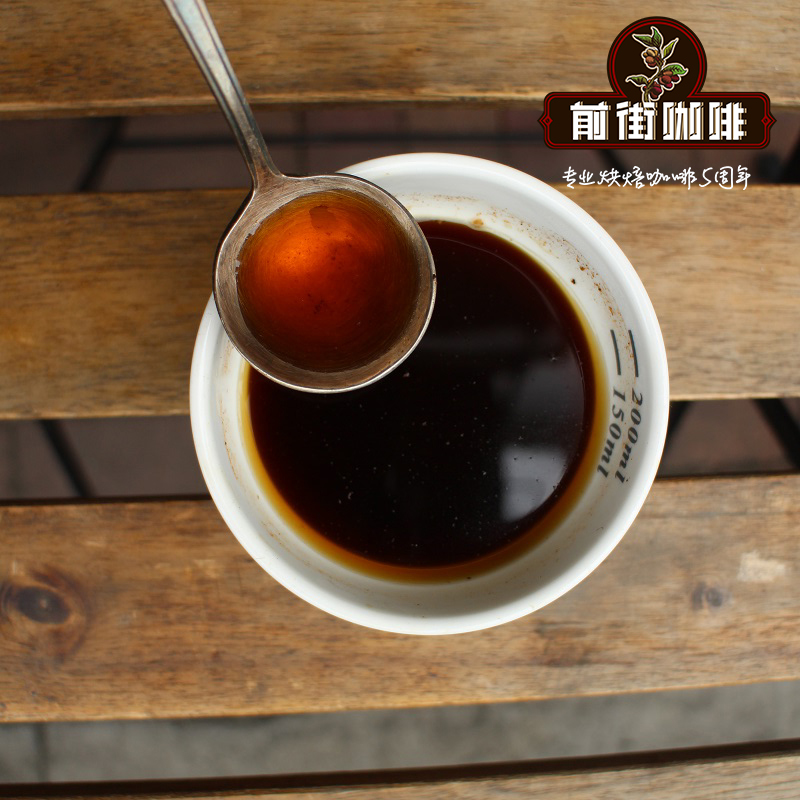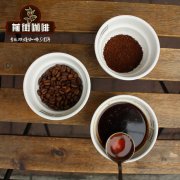What's the difference between half-sun, sun and water washing? How to deal with half-sun?

Professional coffee knowledge exchange More coffee bean information Please pay attention to coffee workshop (Weixin Official Accounts cafe_style)
What's the difference between half sun, sun and water treatments? How to deal with half sun?
Coffee flavor, in addition to varieties, origin, planting methods, there is an important process-coffee green beans processing. Different processing methods will lead to different coffee bean flavor, generally more often heard raw bean processing method is divided into "sun method" and "washing method", what is the difference between the two? Come and see it today! (Extended reading: Ecological Green School-Arabica Bean? Robusta beans?)
Before understanding the green bean treatment method, you must first understand the structure of coffee fruit! Coffee fruits initially appear green, and then gradually mature into red, yellow or orange depending on the variety, due to the appearance of similar cherry shape, so there is also a "coffee cherry" laudatory name.
Generally we see roasted coffee beans on the market, in fact, coffee fruit seeds, usually each fruit has two seeds (sometimes only one), from the outside to the inside structure are exocarp, pulp, pectin layer, endocarp (seed shell), silver skin, seeds, and the sun or washing processing method, is to remove these external structures, in order to obtain the internal coffee seeds (coffee beans).
Dry Process/Natural Method
Sun-drying is the oldest and most primitive method of processing coffee beans. Compared to washing, this drying method of coffee is also called "natural coffee" or "sun coffee". The harvested coffee fruits are exposed to direct sunlight for about two to four weeks. It is usually used in countries with dry and humid climates.
Solarization-Process
1. Harvest ripe coffee fruit
2. Preliminary selection of impurities and inferior beans
3. Screening floating beans: Pour coffee cherries into the sink. The ripe and full fruits will sink to the bottom of the sink, and the immature or incomplete fruits will float to the surface.
4. sun drying
Remove the ripe coffee fruit from the bottom of the sink and spread it in the sun to dry it, reducing the moisture content from 70% to about 10-12%. The fruit should be turned several times a day to air dry evenly and covered at night to avoid moisture.
5. Dehusking: After about two weeks to four weeks of exposure, the outer layer of coffee seeds has dried, and then use a huller to remove the shell.
6. packaging and delivery
The shelled coffee beans will be packaged in bags, which is also what we generally call raw beans. Finally, after different roasting processes and brewing changes, millions of coffee flavors can be presented.
Solarization-Advantages and Disadvantages
Advantages: The treatment process is very simple, does not need to invest too many tools and equipment, and in addition to the removal of floating beans steps, do not need to use water, low cost, in the water resources are not rich and less rich areas are widely used.
Disadvantages:
1 . The need for sufficient space exposure, but also because the coffee beans must be placed outdoors, so there are often fallen leaves, insects and other impurities mixed in.
2. The intensity of sunlight varies from day to day, so it is difficult to control the drying degree of coffee beans.
3. It takes more manpower to turn it regularly to ensure that mold and decay do not occur.
There is now an improved "African overhead shed" design, with a tripod net to avoid moisture and soil impurities on the ground, and air convection to make coffee fruit more ventilated, dry and uniform.
Wet process/Washed method
The technique of washing was invented by the Dutch in the 18th century. Sunning is impossible in some countries because of frequent rain and high humidity, so although the process is relatively cumbersome, it is currently the most widely used treatment. The biggest difference from solarization is the use of fermentation to remove the pectin layer.
The first three steps are the same as the sun treatment method (1. Harvest mature coffee fruits 2. Preliminary selection of impurities and inferior beans 3. Screening floating beans)
4. Peel and pulp removal: The selected good coffee fruit is put into a pulp sifter to remove the exocarp and pulp to leave seeds (coffee beans).
5. Fermentation to remove pectin: coffee seeds attached to a layer of mucous membrane (pectin) into the fermentation tank, the use of biological treatment by fermentation bacteria will dissolve pectin.
6. Washing to remove impurities: Since the fermentation bacteria will remain on the coffee beans, it is necessary to send the beans to the washing tank for cleaning and a second screening (defective beans will float on the water surface). In order to clean this step, a lot of clean water will be consumed in the process.
7. Coffee Bean Drying: Coffee beans are usually dried by machine (or sun drying) to reduce the moisture content to 10- 14%.
8. Remove endocarp, silver skin: finally use the hulling machine to remove the remaining endocarp and silver skin, that is, to complete the processing, you can carry out the packaging and transportation of raw beans!
Advantages: Coffee beans have less impurities, more complete appearance, and because the pulp in the coffee fruit has been removed at the beginning, there is no need to worry about moldy problems, and the overall quality is more stable.
Disadvantages: The process of washing method is complicated and cumbersome, and it needs to use a large amount of water, so the cost is relatively high compared with the solarization method, and it is less used in areas where water resources are scarce.
Is it better to use sun-dried or water-washed coffee?
Sun-baked beans with tropical fruit sweet and sour feeling, keep coffee beans natural mellow, rich flavor layers, sometimes with a little wine! And washed beans due to better control of the fermentation process, so the flavor is not like sun-dried beans have miscellaneous flavor, sour flavor and bright feeling better!
Important Notice :
前街咖啡 FrontStreet Coffee has moved to new addredd:
FrontStreet Coffee Address: 315,Donghua East Road,GuangZhou
Tel:020 38364473
- Prev

What is the difference between solarization and half-solarization, washing and honey treatment? Characteristics of flavor and taste of sun-cured coffee beans?
Professional coffee knowledge exchange more coffee bean information please pay attention to the coffee workshop (Wechat official account cafe_style) half-sun and sun, washing, honey treatment of the difference? What are the flavor and taste characteristics of half-sun? What are the advantages and disadvantages of half-sun? 1. Solarization is the oldest treatment method, according to the literature.
- Next

What's the difference between sunburn, half-sun and half-water washing? How to deal with semi-washing? And honey treatment
Professional coffee knowledge exchange more coffee bean information please follow the coffee workshop (Wechat official account cafe_style) sun, half-sun, washing half-wash what is the difference? How to deal with semi-washing? What's the resemblance to honey treatment? The process of post-processing coffee from the berries at harvest to the final coffee beans completely dried (water content is about 913%). Due to the conditions of each producing area (hydrology)
Related
- Detailed explanation of Jadeite planting Land in Panamanian Jadeite Manor introduction to the grading system of Jadeite competitive bidding, Red bid, Green bid and Rose Summer
- Story of Coffee planting in Brenka region of Costa Rica Stonehenge Manor anaerobic heavy honey treatment of flavor mouth
- What's on the barrel of Blue Mountain Coffee beans?
- Can American coffee also pull flowers? How to use hot American style to pull out a good-looking pattern?
- Can you make a cold extract with coffee beans? What is the right proportion for cold-extracted coffee formula?
- Indonesian PWN Gold Mandrine Coffee Origin Features Flavor How to Chong? Mandolin coffee is American.
- A brief introduction to the flavor characteristics of Brazilian yellow bourbon coffee beans
- What is the effect of different water quality on the flavor of cold-extracted coffee? What kind of water is best for brewing coffee?
- Why do you think of Rose Summer whenever you mention Panamanian coffee?
- Introduction to the characteristics of authentic blue mountain coffee bean producing areas? What is the CIB Coffee Authority in Jamaica?

